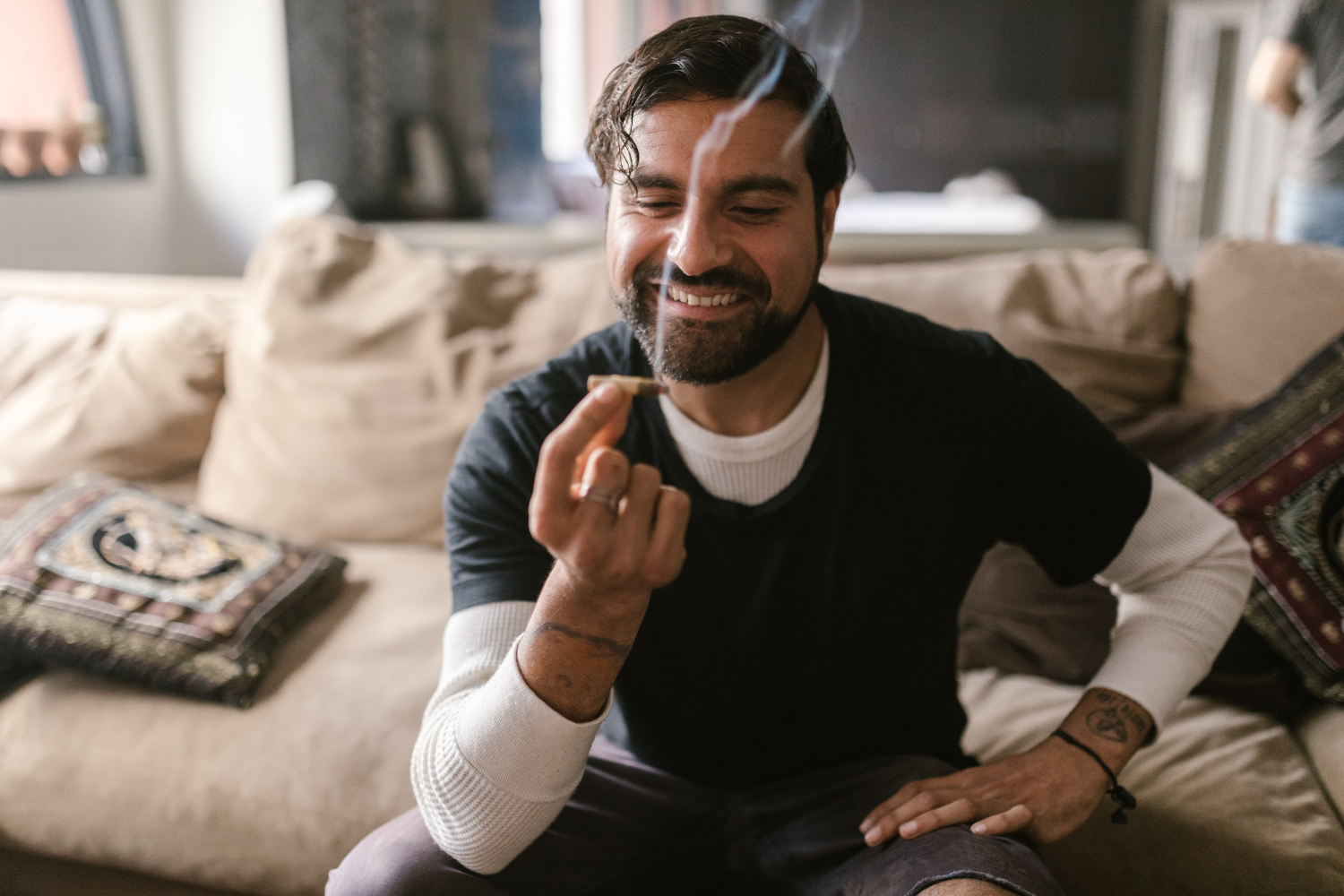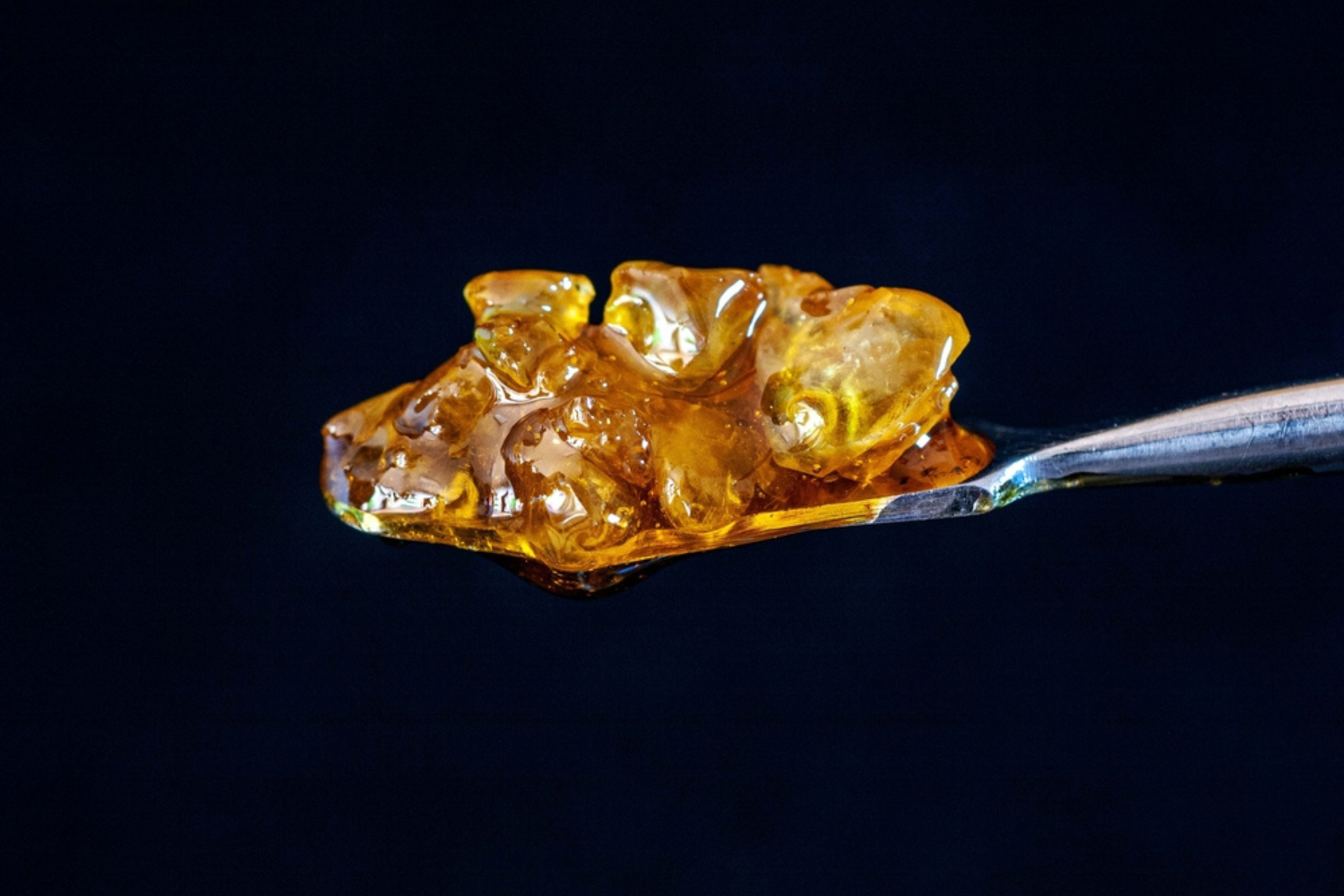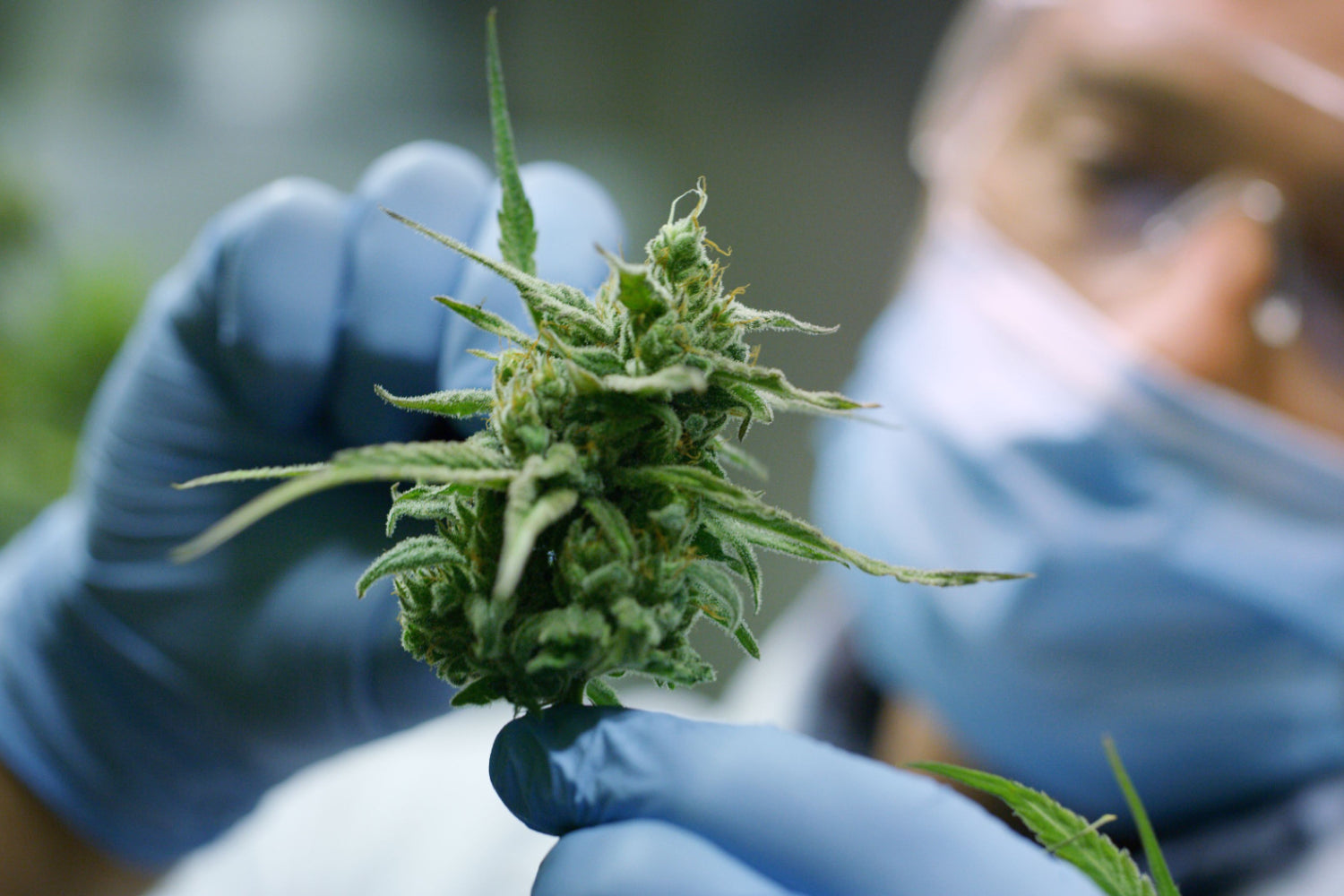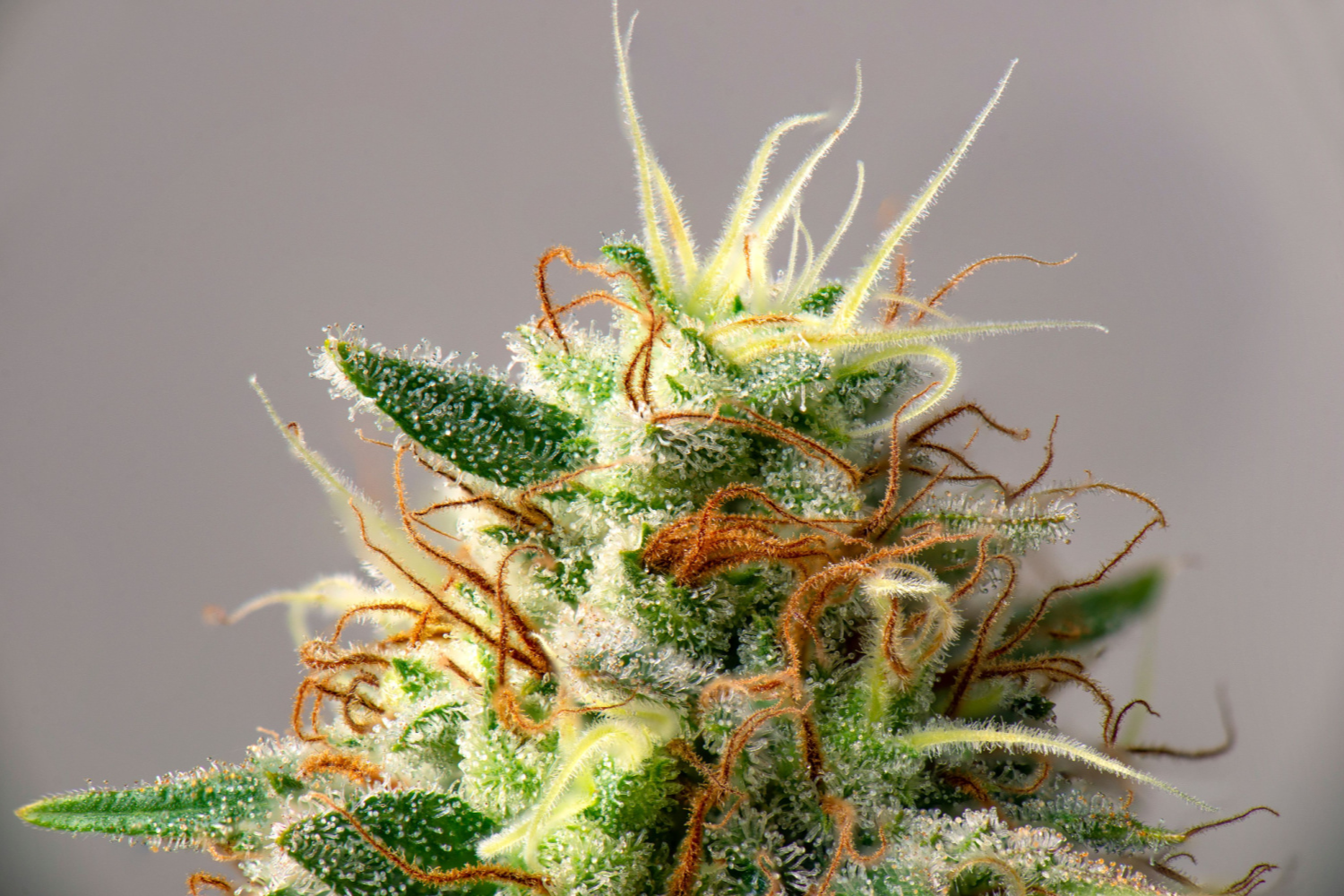After a slow and rocky start, hemp plant supplements are more accessible than ever. But CBD tinctures, vape oil, topicals, and edibles all carved a solid niche among the sea of high (and low) quality CBD products.
But recently, vendors decided to look at the benefits of smoking CBD flower to see how far smokable CBD can go. Smoking cannabis in joints, pipes, bongs, and vaporizers has always been effective, but can the same be said for smoking hemp flowers over other CBD products?
If you're considering smoking CBD flowers, it's essential to understand the pros and cons. What are the benefits of smoking CBD? How does smoked cannabis differ from other methods? Is smoking CBD safe? Most importantly, how does smoking CBD flower feel?
We'll cover everything you need to know to decide if hemp flower buds are the right CBD products for you.
What is CBD Flower?
CBD flower refers to cannabis plants containing less than 0.3% THC in the context of hemp-derived products. However, "hemp" - or "marijuana" for that matter - aren't real plants, but rather words meant to separate federally legal hemp from "marijuana," which contains over 0.3% THC.
However, any high-CBD cultivar ("strain") of the cannabis sativa L. plant species fits the description of "CBD flower," even if the THC exceeds 0.3%. Consequently, some CBD flowers can be legally considered "marijuana," even if the THC levels are minimal.
How Do You Smoke CBD Flower?
If you're one of the many cannabis consumers with dried flower experience, odds are you've come across some of the following methods. All of these are equally applicable to CBD hemp flowers.
-
Joints
-
Pipes
-
Water pipes ("bongs")
-
Dry herb vaporizers
Whichever option you choose, any of these are excellent and effective ways to get your non-intoxicating daily dose of CBD. Let's take a quick look.
Joints
Joints are the most basic way to smoke CBD flower or any variety of dried cannabis. People who smoked regular weed (high THC cannabis) likely were introduced to it with joints.
Of course, there are reasons why joints work so well. Also known as "pre-rolls," cannabis users smoke hemp-derived CBD joints in the same fashion as tobacco cigarettes. You can grind the CBD flower and roll it into a joint or purchase CBD pre-rolls from your favorite vendor.
Which is the Best Way to Smoke CBD Flower?
Combustion
Joints, pipes, and bongs all work the same: direct combustion. According to one study, the bioavailability of these above methods sits at around 31%. This means that when smoking CBD flower, your body uses 31% of the CBD that enters your system (Millar et al., 2018).
Vaporization
Dry herb vapes are another story. If you want to smoke CBD safely and effectively, vaporizers are your best choice. Although they cost more than a pack of pre-rolls or a basic pipe, you can still buy a starter vape for around $30.
Smoking hemp CBD flower from a vaporizer has three distinct advantages. First, bioavailability is much higher. One study examined several dry herb vapes and measured THC and CBD bioavailability. They discovered that, depending on the vaporizer, bioavailability could range between 56 and 83% (Lanz et al., 2016).
Second, vaporization is much better for your lungs. Smoking marijuana or smoking hemp flower from a vape doesn't involve combustion. Instead, the device bakes the ground buds inside an oven to evaporate the cannabinoids and terpenes.
Finally, vaporizers save you money in the long run. Investing in a $300 vaporizer may seem like quite a commitment, but the bioavailability of vaping means you'll need to use less hemp flower per session.
The Endocannabinoid System
The effects of smoking CBD vary depending on your choice of cannabis consumption method and CBD strain. However, we wouldn't be able to experience these benefits without the endocannabinoid system (ECS).
In short, the ECS is a complex system of receptors known as CB1 and CB2. CB1 receptors are primarily located in the central nervous system, while the CB2 variants are present throughout the immune system, bones, organs, and musculoskeletal system.
Cannabinoids that bind heavily to CB1 - specifically THC - trigger psychoactive effects, while attaching to CB2 (which THC also does) triggers a "body high."
The reason these receptors exist is to interact with our natural endocannabinoids, which we produce and distribute to maintain mental and biochemical balance. For instance, endocannabinoids will respond to inflammation by binding to receptors in that area. The same goes for pain, sleep regulation, and other critical functions.
Unlike the over 100 known cannabinoids in cannabis, the endocannabinoid system produces two, anandamide and 2-AG. The former has a similar chemical structure to THC and binds to both the CB1 and CB2 receptors, but it also binds to other pathways in the body. Meanwhile, according to one study, 2-AG exclusively interacts with cannabinoid receptors (Justinova et al., 2011).
It's important to note that despite many studies on CBD and cannabinoids, the Food & Drug Administration (FDA) has not approved CBD as a dietary supplement or that it can diagnose, treat, cure, or prevent any disease. Also, the FDA has not approved any statements made on our website.
How Does CBD Work With the Endocannabinoid System?
How does CBD work with the ECS? The short answer is "it doesn't," at least not directly. Unlike most cannabinoids, CBD doesn't bind directly with the CB1 or CB2 cannabinoid receptors. Instead, it works through other pathways, such as the serotonin, vanilloid, and GABA receptors (among others). This - not the ECS - is the main reason CBD may help symptoms related to sleep, aches, swelling, and more.
Incidentally, this interaction alters the physical shape of the endocannabinoid receptors, affecting how they interact with certain cannabinoids. Most notably, CBD alters the CB1 locations and blocks their ability to bind to THC. Consequently, smoking CBD flower reduces the psychoactive effects of THC.
If you consume THC and CBD together, the high will be milder and shorter than a strain with high THC content.
The Entourage Effect
We can't discuss the ECS without addressing the entourage effect. The term was coined by famous cannabis researchers Ben Shabat and Raphael Mechoulam, who isolated and synthesized THC in 1964 (ironically, we have known about CBD since 1940).
Mechoulam theorized that our two endocannabinoids work together synergistically with other metabolites and molecules in the body, enhancing the overall effects (Mechoulam et al., 1998).
However, the entourage effect we usually think about is the synergistic relationship between cannabinoids and terpenes. This version was first introduced by Dr. Ethan Russo, a neurologist, psychopharmacologist, and cannabis researcher.
Russo took Mechoulam's theory and expanded it to involve terpenes and phytocannabinoids (cannabinoids found outside the body) in a famous academic article (Russo, 2011).
Russo believes (and the evidence seems to support him) that terpenes and cannabinoids work best as one collaborative team. Each brings unique or overlapping benefits, playing on each other's strengths to maximize cannabis potency.
This is why terpene and cannabinoid-rich full-spectrum and broad-spectrum CBD products are superior to pure CBD isolates. That being said, smoking entire CBD flower is technically full-spectrum since you can't mechanically extract any particular compound (like THC) and leave the rest of the flower intact.
What are the Benefits of Smoking CBD Flower?
The benefits of smoking CBD depend on the CBD flower strain, bud quality, cannabinoid profiles, terpene levels, and more.
We already discussed how you can smoke CBD flowers, but are any of those suitable for you? That all depends on your therapeutic or recreational wellness needs.
Fast Absorption
When sudden symptoms hit, you want fast relief. Luckily, Smoking CBD flower is one of the best ways to experience immediate effects.
Unlike CBD oil tinctures and other edibles - which need to pass through the digestive system - smoking hemp flower instantly sends the CBD into the bloodstream. This difference allows the effects to kick in almost immediately.
Smoking hemp flower - or inhaling it in any capacity - gives you the advantage of instant feedback. In other words, you'll know exactly when you've had enough once you feel the reported benefits of CBD.
Inexpensive
People suffering from a variety of symptoms have a lot of ways they can try CBD buds. Joint papers cost only one or two dollars, and you can easily find a dry pipe worth $10 at convenience stores or head shops. After that, all you need is a basic lighter - and who doesn't have a million of those lying around?
Water pipes (bongs) cost more, while dry herb vaporizers can range anywhere from $40 for a basic device to $800 for high-end ones like the Volcano.
However, if you're new to hemp flower (or any dried cannabis), stick with the most straightforward options first.
Easy to Use
Although vaporizers and bongs require a bit more experience, joints and pipes are as simple as it gets. That said, joint-rolling may take a few attempts before you get it right, but the learning curve isn't steep. Alternatively, you can always buy CBD pre-rolls so the work is done for you.
With all other forms of dry herb smoking, you only have to put a small amount of ground flower into the bowl or vaporizer oven.
Fun
Although cannabis oil seems to have the most extended history (dating back thousands of years), dry herb smoking is the go-to for modern smokers.
People who want to experience authentic cannabis without the intoxicating effects now have the option to enjoy a joint or bowl instead of edibles or oils.
What Does CBD Flower Feel Like?
How does smoking CBD feel? Some say it helps ease tension, while others say it quiets the mind. In many cases, people don't report anything specific.
Based on anecdotal and preliminary evidence over an extensive period, the CBD experience isn't about what you feel but rather what you don't feel.
For instance, does a CBD pre-roll before bed help you quiet your mind and relax? Does your favorite inhalable CBD product help curb your anxiety in social situations or important meetings? Do you find a nice CBD joint does wonders for your joints?
All of the above are examples of "feeling" CBD. The bottom line is that if you could sum up the CBD experience, it boils down to one word: "relief."
Can You Feel CBD?
Yes and no. Again, the "feeling" you get from smoking high-CBD hemp flower isn't comparable to THC or other intoxicating substances. The feeling depends on how you experience the benefits of CBD.
If you're typically nervous, CBD may help calm you down. In this case, you might describe the CBD feeling as relaxed and serene. This isn't the result of some inherent effect like the "high" from THC, but rather a sensation of general wellness.
Think of it this way: changing to a healthy diet will make you feel your best. Are you "feeling" the multivitamins, fruits, vegetables, and lean meats? Do tomatoes and chicken have specific effects that trigger your feeling of wellness? What those foods do to nourish your body - and possibly improve nutritional deficiencies - triggers the sensation of feeling your best.
What Does Smoking Too Much CBD Flower Feel Like?
Since CBD has no inherent effects, smoking too much CBD flower won't feel like anything. One thing to remember is that CBD is biphasic, meaning too much CBD can be as ineffective as too little.
Once you feel a difference, exceeding that "sweet spot" dose would be a waste of flower.
Does CBD Flower Give You A Buzz or High?
No, CBD flower doesn't give you a buzz or high, regardless of the CBD content. Cannabis needs to contain 0.3% THC or less to qualify as "hemp" in the eyes of the federal 2018 Farm Bill that legalized it.
Such a little dose of THC makes it impossible for intoxication to happen.
How Long Does it Take to Feel CBD Flower After Inhaling?
Since inhalation sends the CBD and other cannabinoids straight to the bloodstream via the lungs, you'll feel a difference within minutes.
However, smoking CBD flower trades longevity for speed. Although fast-acting, the effects of inhaled cannabis peak at around 30 minutes and last an average of two to three hours.
If you intend to control sudden, unexpected symptoms, smoking CBD flower is the best option. But if you need long-term, sustained relief, you may need to try another type of CBD product, such as CBD oil or gummies.
How Much CBD Flower to Smoke to Feel a Difference?
Smoking CBD isn't an exact science. It's perhaps the least precise of all the CBD options.
When you smoke CBD, there's no way to prepare a precise dose. Unlike edibles or tinctures, which are premeasured, the amount of CBD in each joint, pipe, or bowl is - at best - an educated guess.
So how much CBD flower should you smoke to feel a difference? The answer is "as much as you need." Since you can't pre-measure each puff, rely on the instant absorption to tell you when you're done. Once you feel better, there's no need to consume more.
Listen to your body.
Can Smoking CBD Flower Make you Feel Bad?
Many THC users who consume too much marijuana may experience "greening out," which involves vomiting, dizziness, paranoia, hallucinations, and extreme fatigue.
But since CBD is non-intoxicating, none of the above issues are likely to arise. However, some CBD smokers may notice mild side effects if they take too much. These include:
-
Nausea
-
Fatigue
-
Diarrhea
-
Headache
-
Dry mouth
-
Cough (from excessive smoking)
One primary concern is how smoking dry herb can affect lung function, especially if you have a severe medical condition, like asthma, emphysema, or COPD.
Although no evidence exists that cannabis smoke causes the same diseases as tobacco, the particles, and hydrocarbons within can still irritate the lungs and make you more prone to respiratory infections like bronchitis.
Marijuana vs. CBD Flower Feeling
The difference between marijuana and CBD flower is like night and day. Even non-THC users know that weed makes you high.
Unlike CBD, where the feeling depends on which (if any) symptoms it relieves, THC is a mix of intoxication and potential relief.
Granted, the type of intoxication varies depending on biochemistry, cannabinoid content, and the types of fragrant terpenes within. Some of marijuana's known effects are strong sedation, euphoria, mental or physical energy; increased appetite, and red eyes.
However, these effects seem to happen regardless of the symptoms you hope to treat, rather than the symptom-specific effects of CBD.
Vaping CBD Oil vs. CBD Flower Feeling
The difference between CBD flower and vape oil boils down to the dose of CBD. While flower typically contains a small dose in every puff, even low-dose vape pens have high concentrations of CBD.
For instance, a one-gram CBD joint with 20% THC has 200mg/g. Most vapes sit between 500 to 600mg/g (50-60% CBD).
Aside from needing fewer puffs for the same effects, there's no discernible difference between vape oil and CBD flower.
CBD Oil vs. CBD Flower Feeling
CBD is the same compound, regardless of how you consume it. However, that doesn't mean the CBD oil experience is identical to flower - far from it.
CBD oil and other ingestible products rely on digestion to take effect. Consequently, it takes longer for people to feel relief - at least 30 minutes - compared to fast-acting CBD flower.
Conclusion: How Does CBD Flower Feel Like
CBD flower has no distinct "feeling." Everyone's experience differs depending on their therapeutic needs (if any).
However, we must stress that CBD's medicinal benefits are based on preliminary evidence. Set your expectations accordingly.
Sources
Ben-Shabat, S., Fride, E., Sheskin, T., Tamiri, T., Rhee, M.-H., Vogel, Z., Bisogno, T., De Petrocellis, L., Di Marzo, V., & Mechoulam, R. (1998). An entourage effect: inactive endogenous fatty acid glycerol esters enhance 2-arachidonoyl-glycerol cannabinoid activity. European Journal of Pharmacology, 353(1), 23–31. https://doi.org/10.1016/s0014-2999(98)00392-6
Justinová, Z., Yasar, S., Redhi, G. H., & Goldberg, S. R. (2011). The Endogenous Cannabinoid 2-Arachidonoylglycerol Is Intravenously Self-Administered by Squirrel Monkeys. The Journal of Neuroscience, 31(19), 7043–7048. https://doi.org/10.1523/JNEUROSCI.6058-10.2011
Lanz, C., Mattsson, J., Soydaner, U., & Brenneisen, R. (2016). Medicinal Cannabis: In Vitro Validation of Vaporizers for the Smoke-Free Inhalation of Cannabis. PLOS ONE, 11(1), e0147286. https://doi.org/10.1371/journal.pone.0147286
Millar, S. A., Stone, N. L., Yates, A. S., & O’Sullivan, S. E. (2018). A Systematic Review on the Pharmacokinetics of Cannabidiol in Humans. Frontiers in Pharmacology, 9. https://doi.org/10.3389/fphar.2018.01365
Russo, E. B. (2011). Taming THC: potential cannabis synergy and phytocannabinoid-terpenoid entourage effects. British Journal of Pharmacology, 163(7), 1344–1364. https://doi.org/10.1111/j.1476-5381.2011.01238.x





